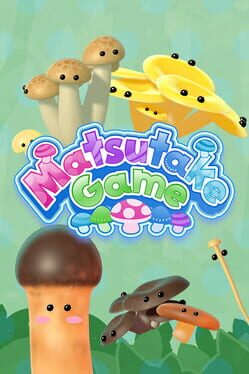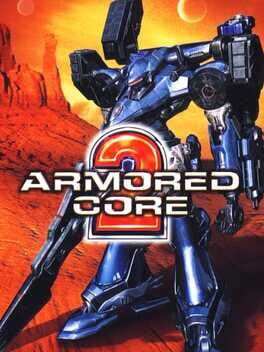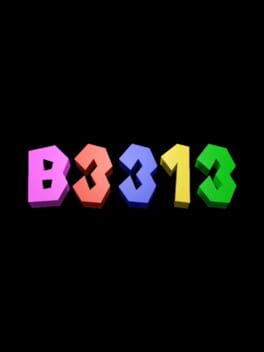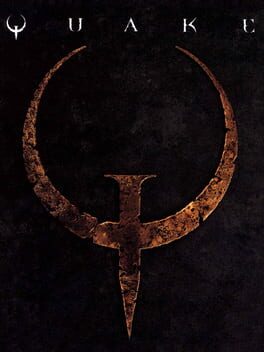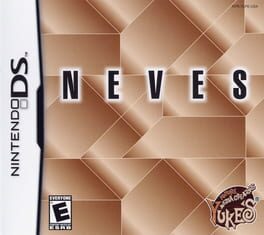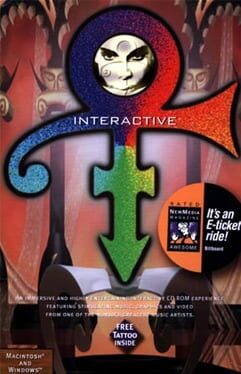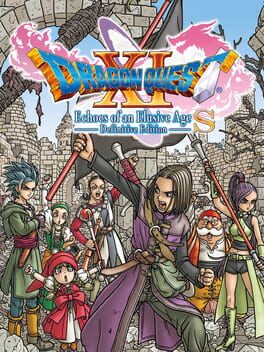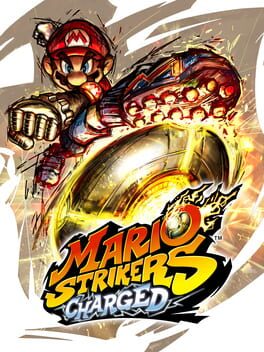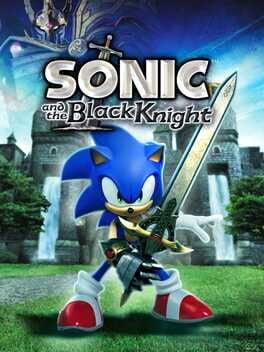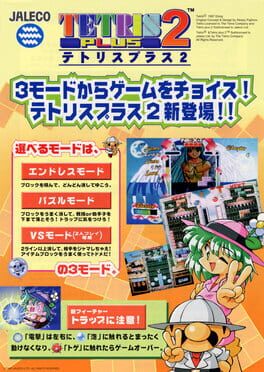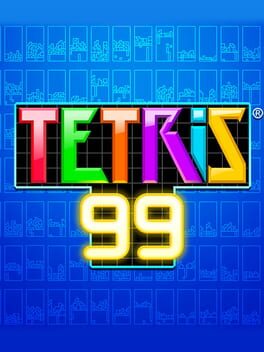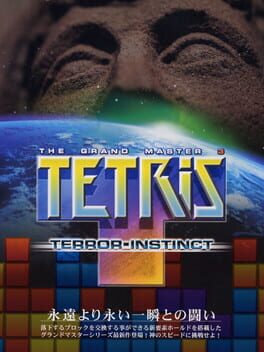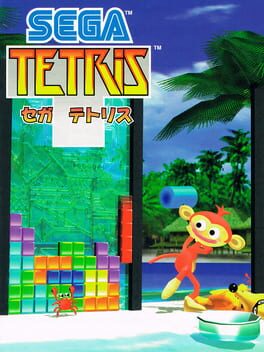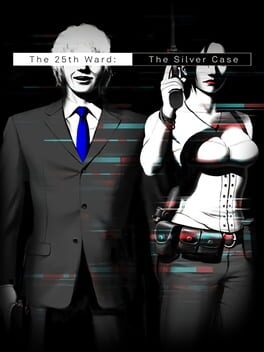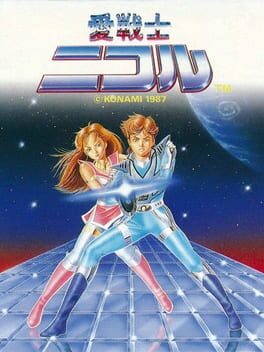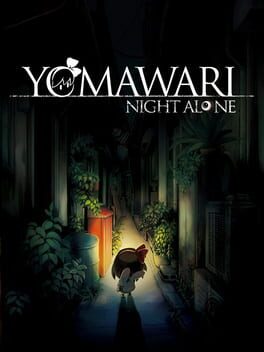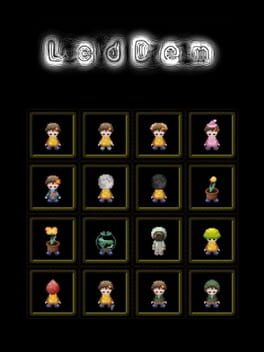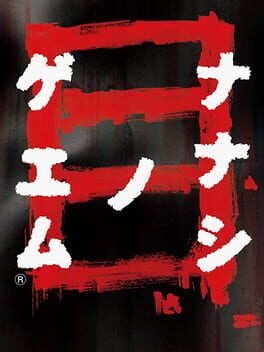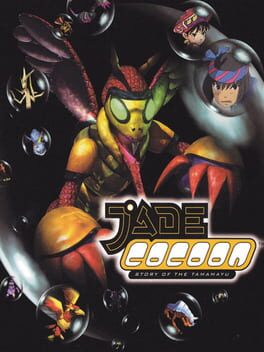dicegame
19 reviews liked by dicegame
Matsutake Game
2024
One of the worst insults you can throw at a video game is to call it an “asset swap.” To say that your work amounts to a fresh coat of paint over something that already existed is, essentially, to say you’ve done nothing. Almost as bad is to call something a “clone,” which implies that you may have done original work, but you’ve failed to iterate upon the inspiration you draw from. There are situations where these pejoratives are appropriate—the flood of “trash” releases on Steam certainly apply—but they’ve become overused to the point that they’ve lost their bite. In the wake of Suika Game’s surprise viral success, a number of games have taken its simple but genius premise (in brief: a sort of physics-based 2048 in which you combine matching objects until you can make the biggest one) and run in their own direction with it. Some are pale imitations with shoddy physics (like Big Watermelon Match), but even games that alter the calculus of gameplay by changing the shapes of the objects or the conditions of the fail state, like PuzzMiX, aren’t immune to being called cheap ripoffs. You would have a hard time criticizing Matsutake Game for being a low effort clone.
Let’s get the obvious thing out of the way: thematically, it’s absolutely nuts. The playing field appears to be a woven basket, and the objects you’re dropping into them are mushrooms; it’s as if you’re a mycology student collecting samples. You drop the adorable fungal friends, each dotted with a pair of beady eyeballs, and a squeak resembling a chew toy clenched between the jaws of a playful pup is heard. It doesn’t even take more than a couple of seconds to get annoying. The core concept is exactly the same as Suika Game, combining mushrooms until you make the titular matsutake—considered a delicacy in Japanese cuisine due to its partially endangered status. As you make your way up the chain of evolution, the name of each mushroom is announced by a cute Japanese voice. (Kikurage, shiitake, maitake, etc.) This also quickly gets overstimulating. The totality of the aesthetics are amusing, but they serve another important purpose: they’re disarming. It’s simply hard to be upset at a loss when lightning streaks across the screen, announcing “GAME OVER” in a fashion far too dramatic for a game about collecting mushrooms.
But it’s not just superficial differences that set Matsutake Game apart from Suika. The shapes of the mushrooms are irregular, in contrast to the perfectly round fruits. This makes their behavior less easy to predict, but more surprising. Chain reactions can come suddenly as pieces jostle around in ways you couldn’t possibly plan for. Most meaningfully, though, is the fact that Matsutake Game is the only Suika-like (that I’ve seen, anyway) that is actually in three dimensions. Pieces can fall behind your field of view or roll into positions you didn’t intend. You can use the extra volume to your advantage, too, filling as much space on the board as you can to set up future chains. It’s a brilliant remix of the formula, while still feeling familiar enough that there’s no sense of a learning curve. The z-axis of the playing field is so narrow that you can almost see everything, but wide enough that you feel the depth of the container.
Matsutake Game feels a world apart from Suika Game to me, though I can still imagine a casual observer saying it’s not different enough to justify existing. This is partially due to the fact that you can intuit so much from a physics game simply by looking at it; Suika-likes hide little from you, allowing you grasp the objective in only a couple of seconds. What you can’t glean from a cursory glance is how it feels. Suika Game is, itself, a clone of a Chinese mobile game called Synthetic Watermelon. It became a phenomenon because it refined the formula it copied, perfecting previously unreliable physics and wrapping it in an aesthetic that was far more pleasant to look at. Matsutake Game feels like a similarly significant leap. If you’ve only messed around in a Suika-like for a few minutes and gotten bored, they’re probably all the same to you—but if you’re really about it, there’s a whole new world to find inside that wicker basket.
Let’s get the obvious thing out of the way: thematically, it’s absolutely nuts. The playing field appears to be a woven basket, and the objects you’re dropping into them are mushrooms; it’s as if you’re a mycology student collecting samples. You drop the adorable fungal friends, each dotted with a pair of beady eyeballs, and a squeak resembling a chew toy clenched between the jaws of a playful pup is heard. It doesn’t even take more than a couple of seconds to get annoying. The core concept is exactly the same as Suika Game, combining mushrooms until you make the titular matsutake—considered a delicacy in Japanese cuisine due to its partially endangered status. As you make your way up the chain of evolution, the name of each mushroom is announced by a cute Japanese voice. (Kikurage, shiitake, maitake, etc.) This also quickly gets overstimulating. The totality of the aesthetics are amusing, but they serve another important purpose: they’re disarming. It’s simply hard to be upset at a loss when lightning streaks across the screen, announcing “GAME OVER” in a fashion far too dramatic for a game about collecting mushrooms.
But it’s not just superficial differences that set Matsutake Game apart from Suika. The shapes of the mushrooms are irregular, in contrast to the perfectly round fruits. This makes their behavior less easy to predict, but more surprising. Chain reactions can come suddenly as pieces jostle around in ways you couldn’t possibly plan for. Most meaningfully, though, is the fact that Matsutake Game is the only Suika-like (that I’ve seen, anyway) that is actually in three dimensions. Pieces can fall behind your field of view or roll into positions you didn’t intend. You can use the extra volume to your advantage, too, filling as much space on the board as you can to set up future chains. It’s a brilliant remix of the formula, while still feeling familiar enough that there’s no sense of a learning curve. The z-axis of the playing field is so narrow that you can almost see everything, but wide enough that you feel the depth of the container.
Matsutake Game feels a world apart from Suika Game to me, though I can still imagine a casual observer saying it’s not different enough to justify existing. This is partially due to the fact that you can intuit so much from a physics game simply by looking at it; Suika-likes hide little from you, allowing you grasp the objective in only a couple of seconds. What you can’t glean from a cursory glance is how it feels. Suika Game is, itself, a clone of a Chinese mobile game called Synthetic Watermelon. It became a phenomenon because it refined the formula it copied, perfecting previously unreliable physics and wrapping it in an aesthetic that was far more pleasant to look at. Matsutake Game feels like a similarly significant leap. If you’ve only messed around in a Suika-like for a few minutes and gotten bored, they’re probably all the same to you—but if you’re really about it, there’s a whole new world to find inside that wicker basket.
Armored Core 2
2000
Interested in Armored Core 2 but haven't played it yet?
Maybe Armored Core 6 was your 2023 GOTY and you want to see what one of the older games is all about?
Check out this Prep Kit! It's full of magazine coverage, sourced interviews with Kota Hoshino & Tsukasa Saito, official renders and promo, Shoji Kawamori sketches, an action figure line, and even Frankie Muniz. I've compiled everything in one place to help get you in that Launch Day mindset! Did you know German DJ Mijk Van Dijk composed the game's theme and released it on a 12" as GameTrax Vol.2? Check it out -
https://goatedquest.blogspot.com/2024/05/070-armored-core-2-prep-kit.html
Let me help make every game you play feel brand new, no matter how old
Maybe Armored Core 6 was your 2023 GOTY and you want to see what one of the older games is all about?
Check out this Prep Kit! It's full of magazine coverage, sourced interviews with Kota Hoshino & Tsukasa Saito, official renders and promo, Shoji Kawamori sketches, an action figure line, and even Frankie Muniz. I've compiled everything in one place to help get you in that Launch Day mindset! Did you know German DJ Mijk Van Dijk composed the game's theme and released it on a 12" as GameTrax Vol.2? Check it out -
https://goatedquest.blogspot.com/2024/05/070-armored-core-2-prep-kit.html
Let me help make every game you play feel brand new, no matter how old
B3313
2021
can something be obnoxiously juvenile but also a totally unique lightning-in-a-bottle experience at the same time? because that's B3313 to me. the internet iceberg meme/creepypasta origins of this ended up leading to the creation of something that is kind of unlike anything else in existence (even if it is heavily indebted to stuff like Yume Nikki), but it is also somewhat inherently limited by its origins.
it's sort of like if Mario's castle was reimagined as Constantine's Mansion in Thief: The Dark Project, mixed with Yume Nikki and various internet memes. in your endless hours wandering through the confusing labyrinth of the castle, there are isolated moments that are unique and brilliant. and then there others that are just sort of… there. you’ll spend 15 minutes wandering through a bunch of fairly bland, indistinct rooms and corridors and then you’ll come upon something really haunting and memorable. and then, maybe, you'll be right back in the bland mazes. maybe you'll run into some creepy thing and crash the game. maybe creepy thing will be interesting and well executed, or maybe it'll just be obnoxious boilerplate creepypasta stuff.
these contradictions get more and more noticeable the further into it you are. some of the levels are really interesting/bizarre alternate universe takes that recontextualize the original Mario 64 and seem to offer greater commentary about the nature of how nostalgia shifts things into an alternate universe that is actually different from the source of the memory. "i like to remember things my own way. how i remembered them, not necessarily how they happened" says the deeply troubled Fred Madison in David Lynch's Lost Highway. but other times it feels like you wish you were spending more time in the new/more unique areas you occasionally stumble upon, and less in the 6th variation of old Mario 64 levels.
B3313 feels almost like a bigger AAA game to me in both the sheer scope of the project that's filled with a lot of internal contradictions, and in also how much it truly doesn't respect your time. that’s probably the nature of things of this size, and that a lot of people were involved contributing in what seems like a very tumultuous dev cycle after a certain point. but perhaps that explains a lot about the sometimes inconsistent/varied nature of the experience.
i will personally admit to not caring whatsoever about the personalized copy of Mario 64 meme or the numerous ways this hack borrows from different beta builds of Mario 64. i like Mario 64 a lot, but it is absolutely wild to me the way that game has been metabolized into the consciousness of videogame world. and so i do think the whole “this is a beta version of the game” thing and slavishly cobbling together any and every scrap of asset or idea that was cut from an early documented build of Mario 64 to put on this thing is a bit of a dead end artistically. most of the stuff Nintendo used in earlier builds just seemed like temp assets and doesn’t seem THAT interesting to me outside of that context. it's just not very interesting to those of us who are not 17 years old anymore and not still spooked by internet lore. it just feeds back into a lot of fan culture content machine around big franchises that just feels like this self replicating beast that never really goes anywhere and is always invariably beaten back into conformity by the big companies that are in control of these properties.
i am someone who loves strange and unique experiences. but to me, i want stuff that i guess attaches itself more to telling a specific kind of story through what it’s doing, and B3313 is a bit too much online meme-referencing for me to take that aspect of it very seriously at all. B3313 doesn’t have the narrative coherence of a MyHouse which i guess is the other big artsy creepypasta game mod of the moment. and it doesn’t have the artful direction of a Yume Nikki, which it is obviously cribbing the general kind of surreal abstract multidimensional wander maze thing from.
all of this is to say: why did i give it 4 stars and 30+ hours of my time, then? maybe it comes down to: there is an indelible, haunting Tower of Druaga-esque charm to all of it. the commitment to being cryptic and giving the player nothing and doing all these machinations behind the scenes in the game is kind of remystifying what has been lost in a lot of consumer-facing art in general. in games, with all the talk of FromSoft games or like the last couple Zeldas bringing back "old school" difficulties and design values, those are meticulously tested commercial products… not community made romhacks. they simply can’t go anywhere near as far out there as something like this. and we in general are in a moment when so much art seems paralyzed and unwilling to take chances out of risk aversion from industries that have been strip-mined by the rich and powerful. something like B3313 stands in contrast to that - completely unwilling to compromise itself.
with B3313, oftentimes there really is nothing on the other side. but that emptiness starts to feel really intentional after a certain point. as a player, what's interesting in the feeling that you want the design to follow some kind of logic that you can eventually glean so that you can understand what the designers were getting at is that it feels almost like an intentional choice to have it consistently not do that. occasionally it does hint at a deeper language/design sensibility, but mostly it doesn’t. there are times when the “story” or the progression of stages seems to be developing into something more coherent, but then the rug is pulled out from under you. and that happens over and over. because it’s all rug pulls at the end of the day. the message of the design is: whatever happens, whatever journey you go through… it’s all inevitably a way to throw you back into the maze. you’ll always be endlessly wandering the maze.
to me, that says something about Nintendo games in general - how you have these long journeys that (in the case of the newer Zelda especially) aggressively don’t respect your time and send you to all these interesting locations. and then it always just sorta ends, because there’s nothing really deeper at the core a lot of the time. it's escapist entertainment, often with some kind of crypto-conservative values and imagery in it. B3313 feels totally unafraid to unearth and make you fully experience that ugly side.
maybe a lot of our larger culture right now, especially obsessive lore-based fan culture, are just variations of that too. increasingly everything seems like it's hostile, broken down, and filled with different kind of rug pulls. the ground feels totally unstable and there is no “there” there a lot of the time, but we keep shoveling through hoping for new discoveries and hoping for it all to make sense. it’s like being in an abusive, codependent relationship. there’s no light at the end of the tunnel. it’s a disempowerment fantasy. and B3313 captures that feeling absolutely perfectly, in such a uniquely fleshed out way.
there are moments to B3313 that are genuinely unique and fun too, like some of the more creative creepypasta scenarios that i won’t spoil here. or like, occasional stages like the one when you have to climb some structures that are supposed to be some sort of bob-omb factory. you activate the “self-destruct” sequence when you enter which causes you to have to outrun rising lava until the top. and then you get to the top and there’s a little yellow bob-omb guy sitting in a little office and just complaining about how you destroyed the whole factory. it does make me wonder if there’s like some kind of commentary on the tropes of Mario games being attempted in small moments like that. like the fact that Mario is basically a cipher who everything resolves around, and none of these other characters have any agency.
of course, none of that is delved upon for very long. because invariably, you're going to get fed back into the maze. and so that's both the great strength and the great flaw of something like B3313. it doesn't try to offer a way out, it just tries to express what is there. and in doing so it captures a feeling perfectly, in a way that is inspiring. even as a memey internet romhack, it is absolutely something i would call an "art game". there are a lot of memorable areas and moments that really explores the latent strangeness and darkness of Nintendo games, and the latent surrealism of a lot ofearly 3D games in general. it’s also real testament to how far romhacking/modding community projects can really go artistically, along with MyHouse.wad. it could have an enormous impact on a lot of games stuff that comes further down the line. so it’s definitely something that demands more attention and respect outside the whole memey lore ecosystem a lot of this stuff usually occupies. it of course, comes from that however and will probably will do itself no favors in distinguishing itself from that.
i only hope in the future that people take the ambition and interesting ideas from this and run with it in a way that feels unafraid to make a larger statement about the world, and doesn't just do the cowardly thing of retreating with its tail between its legs back into insular internet memes and the online lore ecosystem fed by various content creators. whether or not you think B3313 subverts or further perpetuates that that i guess is up to you. but i still think we have a pretty far way to go.
it's sort of like if Mario's castle was reimagined as Constantine's Mansion in Thief: The Dark Project, mixed with Yume Nikki and various internet memes. in your endless hours wandering through the confusing labyrinth of the castle, there are isolated moments that are unique and brilliant. and then there others that are just sort of… there. you’ll spend 15 minutes wandering through a bunch of fairly bland, indistinct rooms and corridors and then you’ll come upon something really haunting and memorable. and then, maybe, you'll be right back in the bland mazes. maybe you'll run into some creepy thing and crash the game. maybe creepy thing will be interesting and well executed, or maybe it'll just be obnoxious boilerplate creepypasta stuff.
these contradictions get more and more noticeable the further into it you are. some of the levels are really interesting/bizarre alternate universe takes that recontextualize the original Mario 64 and seem to offer greater commentary about the nature of how nostalgia shifts things into an alternate universe that is actually different from the source of the memory. "i like to remember things my own way. how i remembered them, not necessarily how they happened" says the deeply troubled Fred Madison in David Lynch's Lost Highway. but other times it feels like you wish you were spending more time in the new/more unique areas you occasionally stumble upon, and less in the 6th variation of old Mario 64 levels.
B3313 feels almost like a bigger AAA game to me in both the sheer scope of the project that's filled with a lot of internal contradictions, and in also how much it truly doesn't respect your time. that’s probably the nature of things of this size, and that a lot of people were involved contributing in what seems like a very tumultuous dev cycle after a certain point. but perhaps that explains a lot about the sometimes inconsistent/varied nature of the experience.
i will personally admit to not caring whatsoever about the personalized copy of Mario 64 meme or the numerous ways this hack borrows from different beta builds of Mario 64. i like Mario 64 a lot, but it is absolutely wild to me the way that game has been metabolized into the consciousness of videogame world. and so i do think the whole “this is a beta version of the game” thing and slavishly cobbling together any and every scrap of asset or idea that was cut from an early documented build of Mario 64 to put on this thing is a bit of a dead end artistically. most of the stuff Nintendo used in earlier builds just seemed like temp assets and doesn’t seem THAT interesting to me outside of that context. it's just not very interesting to those of us who are not 17 years old anymore and not still spooked by internet lore. it just feeds back into a lot of fan culture content machine around big franchises that just feels like this self replicating beast that never really goes anywhere and is always invariably beaten back into conformity by the big companies that are in control of these properties.
i am someone who loves strange and unique experiences. but to me, i want stuff that i guess attaches itself more to telling a specific kind of story through what it’s doing, and B3313 is a bit too much online meme-referencing for me to take that aspect of it very seriously at all. B3313 doesn’t have the narrative coherence of a MyHouse which i guess is the other big artsy creepypasta game mod of the moment. and it doesn’t have the artful direction of a Yume Nikki, which it is obviously cribbing the general kind of surreal abstract multidimensional wander maze thing from.
all of this is to say: why did i give it 4 stars and 30+ hours of my time, then? maybe it comes down to: there is an indelible, haunting Tower of Druaga-esque charm to all of it. the commitment to being cryptic and giving the player nothing and doing all these machinations behind the scenes in the game is kind of remystifying what has been lost in a lot of consumer-facing art in general. in games, with all the talk of FromSoft games or like the last couple Zeldas bringing back "old school" difficulties and design values, those are meticulously tested commercial products… not community made romhacks. they simply can’t go anywhere near as far out there as something like this. and we in general are in a moment when so much art seems paralyzed and unwilling to take chances out of risk aversion from industries that have been strip-mined by the rich and powerful. something like B3313 stands in contrast to that - completely unwilling to compromise itself.
with B3313, oftentimes there really is nothing on the other side. but that emptiness starts to feel really intentional after a certain point. as a player, what's interesting in the feeling that you want the design to follow some kind of logic that you can eventually glean so that you can understand what the designers were getting at is that it feels almost like an intentional choice to have it consistently not do that. occasionally it does hint at a deeper language/design sensibility, but mostly it doesn’t. there are times when the “story” or the progression of stages seems to be developing into something more coherent, but then the rug is pulled out from under you. and that happens over and over. because it’s all rug pulls at the end of the day. the message of the design is: whatever happens, whatever journey you go through… it’s all inevitably a way to throw you back into the maze. you’ll always be endlessly wandering the maze.
to me, that says something about Nintendo games in general - how you have these long journeys that (in the case of the newer Zelda especially) aggressively don’t respect your time and send you to all these interesting locations. and then it always just sorta ends, because there’s nothing really deeper at the core a lot of the time. it's escapist entertainment, often with some kind of crypto-conservative values and imagery in it. B3313 feels totally unafraid to unearth and make you fully experience that ugly side.
maybe a lot of our larger culture right now, especially obsessive lore-based fan culture, are just variations of that too. increasingly everything seems like it's hostile, broken down, and filled with different kind of rug pulls. the ground feels totally unstable and there is no “there” there a lot of the time, but we keep shoveling through hoping for new discoveries and hoping for it all to make sense. it’s like being in an abusive, codependent relationship. there’s no light at the end of the tunnel. it’s a disempowerment fantasy. and B3313 captures that feeling absolutely perfectly, in such a uniquely fleshed out way.
there are moments to B3313 that are genuinely unique and fun too, like some of the more creative creepypasta scenarios that i won’t spoil here. or like, occasional stages like the one when you have to climb some structures that are supposed to be some sort of bob-omb factory. you activate the “self-destruct” sequence when you enter which causes you to have to outrun rising lava until the top. and then you get to the top and there’s a little yellow bob-omb guy sitting in a little office and just complaining about how you destroyed the whole factory. it does make me wonder if there’s like some kind of commentary on the tropes of Mario games being attempted in small moments like that. like the fact that Mario is basically a cipher who everything resolves around, and none of these other characters have any agency.
of course, none of that is delved upon for very long. because invariably, you're going to get fed back into the maze. and so that's both the great strength and the great flaw of something like B3313. it doesn't try to offer a way out, it just tries to express what is there. and in doing so it captures a feeling perfectly, in a way that is inspiring. even as a memey internet romhack, it is absolutely something i would call an "art game". there are a lot of memorable areas and moments that really explores the latent strangeness and darkness of Nintendo games, and the latent surrealism of a lot ofearly 3D games in general. it’s also real testament to how far romhacking/modding community projects can really go artistically, along with MyHouse.wad. it could have an enormous impact on a lot of games stuff that comes further down the line. so it’s definitely something that demands more attention and respect outside the whole memey lore ecosystem a lot of this stuff usually occupies. it of course, comes from that however and will probably will do itself no favors in distinguishing itself from that.
i only hope in the future that people take the ambition and interesting ideas from this and run with it in a way that feels unafraid to make a larger statement about the world, and doesn't just do the cowardly thing of retreating with its tail between its legs back into insular internet memes and the online lore ecosystem fed by various content creators. whether or not you think B3313 subverts or further perpetuates that that i guess is up to you. but i still think we have a pretty far way to go.
Quake
1996
Neves
2007
Dissection puzzles have existed at least as long as recorded history, probably. In brief: a dissection puzzle is a set of tiles that can be assembled to create at least two (but usually more) different configurations of geometric shapes. It’s an idea so simple that variations of it appeared in at least two different parts of the world completely independent of one another. In Ancient Greece, dissection puzzles that visually illustrate the Pythagorean theorem were developed, and are believed to be instrumental to its proof as a fundamental relation of geometry. In China, a type of dissection puzzle known as the tangram has origins in oddly shaped modular banquet tables of the Song dynasty, meant to be moved around and arranged into fun shapes to entertain guests.
How exactly dissection puzzles made their way to Japan is unclear. In 1935, Hanayama Toys manufactured a dissection puzzle made of wooden blocks called the Lucky Puzzle and codified the version of the game that would remain popular in the Land of the Rising Sun to this day. Likely based on the tangram, it bears a remarkable similarity to its Chinese cousin. It’s composed of seven pieces, just like a tangram, but has an elegant self-symmetry that makes it unique from almost all other dissection puzzles.
In Japan, the Lucky Puzzle is recognizable enough that no explanation is needed. So in November of 2007, when a Nintendo DS game based on the classic brain teaser was released, they simply only needed to call it Lucky Puzzle DS. However, North America required a different strategy. Dissection puzzles reached western shores at various points in history, but failed to establish themselves as popular choices for would-be brainiacs. Rather than call it what it is, Osaka-based publisher and developer Yuke's invented the nonsense word Neves to adorn the front cover, similar to other puzzle games on the system. (Polarium, Zenses, and Magnetica, to name just a few of many examples.)
Even without the strong cultural recognition, Neves is intuitively easy to pick up and play. Following a brief tutorial, you’re ready to get right into snapping together shapes. The main attraction is the “Silhouettes?” mode, which is a digital refresh of a Lucky Puzzle picture book. You’re provided with outlines of the solution you’re tasked to replicate, and you have an unlimited amount of time to flip and rotate blocks until you figure it out. The puzzles themselves run a good gamut of difficulty, from ones you can solve at a glance to others that will have you fitting shapes together in every possible configuration and still scratching your head. On a few occasions, I even encountered a version of the famous tangram paradox, in which a construction of pieces seems to be an impossible subset of another. Very cool!
Neves does, however, ignore an important element of dissection puzzles: the ability to create your own silhouettes and challenge other players to mirror them. Perhaps this wasn’t possible due to the medium or too complicated for the type of budget the developers were working with, but Neves does attempt to offset this shortcoming with a couple of additional game modes. There are timed versions of each puzzle, as well as a “7 Steps” mode in which each block you place can’t be moved once it’s glued down.
Due to its novel form factor and tactile controls, the Nintendo DS would end up being an incredible platform for puzzle games. Untethered from the need to interface with games through the mechanical presses of buttons alone, it became possible for your hands to interact with puzzles almost as quickly as your brain could parse through them. Neves doesn’t make the experience perfectly seamless (the flipping and rotating can be a little clunky), but one need only compare to games like Tangram for the Amiga or Daedalian Opus to see how quickly things speed up. It’s a surprisingly solid offering, but then again, it does have the advantage of a few millennia of game design.
How exactly dissection puzzles made their way to Japan is unclear. In 1935, Hanayama Toys manufactured a dissection puzzle made of wooden blocks called the Lucky Puzzle and codified the version of the game that would remain popular in the Land of the Rising Sun to this day. Likely based on the tangram, it bears a remarkable similarity to its Chinese cousin. It’s composed of seven pieces, just like a tangram, but has an elegant self-symmetry that makes it unique from almost all other dissection puzzles.
In Japan, the Lucky Puzzle is recognizable enough that no explanation is needed. So in November of 2007, when a Nintendo DS game based on the classic brain teaser was released, they simply only needed to call it Lucky Puzzle DS. However, North America required a different strategy. Dissection puzzles reached western shores at various points in history, but failed to establish themselves as popular choices for would-be brainiacs. Rather than call it what it is, Osaka-based publisher and developer Yuke's invented the nonsense word Neves to adorn the front cover, similar to other puzzle games on the system. (Polarium, Zenses, and Magnetica, to name just a few of many examples.)
Even without the strong cultural recognition, Neves is intuitively easy to pick up and play. Following a brief tutorial, you’re ready to get right into snapping together shapes. The main attraction is the “Silhouettes?” mode, which is a digital refresh of a Lucky Puzzle picture book. You’re provided with outlines of the solution you’re tasked to replicate, and you have an unlimited amount of time to flip and rotate blocks until you figure it out. The puzzles themselves run a good gamut of difficulty, from ones you can solve at a glance to others that will have you fitting shapes together in every possible configuration and still scratching your head. On a few occasions, I even encountered a version of the famous tangram paradox, in which a construction of pieces seems to be an impossible subset of another. Very cool!
Neves does, however, ignore an important element of dissection puzzles: the ability to create your own silhouettes and challenge other players to mirror them. Perhaps this wasn’t possible due to the medium or too complicated for the type of budget the developers were working with, but Neves does attempt to offset this shortcoming with a couple of additional game modes. There are timed versions of each puzzle, as well as a “7 Steps” mode in which each block you place can’t be moved once it’s glued down.
Due to its novel form factor and tactile controls, the Nintendo DS would end up being an incredible platform for puzzle games. Untethered from the need to interface with games through the mechanical presses of buttons alone, it became possible for your hands to interact with puzzles almost as quickly as your brain could parse through them. Neves doesn’t make the experience perfectly seamless (the flipping and rotating can be a little clunky), but one need only compare to games like Tangram for the Amiga or Daedalian Opus to see how quickly things speed up. It’s a surprisingly solid offering, but then again, it does have the advantage of a few millennia of game design.
Prince Interactive
1994
It doesn’t really need to be said that Prince was a living legend. The world renowned multi-instrumentalist maintained a career that spanned four decades, cut short only because of his untimely passing in 2016. There were sharp peaks and valleys in his popularity, like all great musicians, but he consistently managed to catapult himself back into the conversation due to his lightning quick adaptability. When The Revolution—the backing band that helped propel him into superstardom with Purple Rain—dissolved, he didn’t waste any time getting back into the studio by himself. He put together one of the best albums of his career, Sign "☮︎" the Times, while his personal and professional relationships were in a highly mercurial state. In fact, this period was so prolific that the label executives at Warner Bros. had to negotiate with Prince to cut down the length of the album; it ended up releasing “only” as a double LP instead of an absurd triple record affair.
Prince’s versatility wasn’t only limited to his musical talent. His headlong embrace of new technology was undoubtedly a major factor in his unprecedented ability to stave off irrelevancy. He was an early adopter of the Fairlight CMI, a synthesizer that few musicians could even afford in the mid 1980s. Prince’s vault where he hoarded his vast reserves of unreleased music had a DOS-based computer cataloging system on its frontend, affectionately called Mr. Vault Guy, that accounted for the contents of every tape, disc, and hard drive. He was also much earlier than most to the idea of internet distribution, stubbornly insisting on selling the Crystal Ball box set through his own website in 1998, to the detriment of sales.
Given his love for the bleeding edge of progress, it only makes sense that Prince would become interested in video games. In 1994, when Prince Interactive was released, it was yet another volatile period for the artist. To set the stage a little bit: his final album with Warner, Come, was set to release in two months. He purposely refused to promote the new project as a means of spiting the label, ending his contractual obligations by giving them as little profit as possible. He changed his name to an unpronounceable symbol the year before, forcing everyone to call him “The Artist Formerly Known As Prince.” The name of the game, technically, isn’t even Prince Interactive, but we have to call it something!
Cyan’s highly influential Myst released a year prior to Interactive, and the similarities are more than superficial. You find yourself in a fictionalized version of Prince’s home and recording studio Paisley Park, solving simple point-and-click puzzles. Broadly, the objective is to search the mansion and assemble the scattered pieces of the nameless musician’s eponymous symbol as if they’re fragments of the Triforce, though in practice this amounts to a flimsy excuse to poke around and uncover various Prince-related easter eggs. There are an abundance of music snippets, photos, and interviews with other musicians—in which they all heap praise on Prince—to be found. The game even kicks off with an exclusive song called “Interactive,” ostensibly a song about being a song in a video game. (He would pull a similar move years later with “Cybersingle,” a song about the fact that you could download it from the Internet.)
What ends up being most interesting about Interactive is not necessarily how it innovates, but how it’s indicative of its time. Functionally, it does little to stand out from contemporary adventure games like Myst, Beneath a Steel Sky, or Day of the Tentacle. (It’s not even unique as a piece of multimedia artist memorabilia; JUMP: The David Bowie Interactive CD-ROM released earlier the same year.) Historically, it acted as an important document for fans and scribes looking to document the inner workings of Prince’s operation; tours of Paisley Park weren’t permitted while he was alive, and despite all the fantastical embellishments of his Minnesota home, this was the only way to get a surprisingly accurate walkthrough of his studio. Thematically, it tells a story of Prince’s legacy as it stood in the mid ‘90s—full of references to his unassailable accomplishments, but also serving to build up hype for the second act of his career.
Prince’s versatility wasn’t only limited to his musical talent. His headlong embrace of new technology was undoubtedly a major factor in his unprecedented ability to stave off irrelevancy. He was an early adopter of the Fairlight CMI, a synthesizer that few musicians could even afford in the mid 1980s. Prince’s vault where he hoarded his vast reserves of unreleased music had a DOS-based computer cataloging system on its frontend, affectionately called Mr. Vault Guy, that accounted for the contents of every tape, disc, and hard drive. He was also much earlier than most to the idea of internet distribution, stubbornly insisting on selling the Crystal Ball box set through his own website in 1998, to the detriment of sales.
Given his love for the bleeding edge of progress, it only makes sense that Prince would become interested in video games. In 1994, when Prince Interactive was released, it was yet another volatile period for the artist. To set the stage a little bit: his final album with Warner, Come, was set to release in two months. He purposely refused to promote the new project as a means of spiting the label, ending his contractual obligations by giving them as little profit as possible. He changed his name to an unpronounceable symbol the year before, forcing everyone to call him “The Artist Formerly Known As Prince.” The name of the game, technically, isn’t even Prince Interactive, but we have to call it something!
Cyan’s highly influential Myst released a year prior to Interactive, and the similarities are more than superficial. You find yourself in a fictionalized version of Prince’s home and recording studio Paisley Park, solving simple point-and-click puzzles. Broadly, the objective is to search the mansion and assemble the scattered pieces of the nameless musician’s eponymous symbol as if they’re fragments of the Triforce, though in practice this amounts to a flimsy excuse to poke around and uncover various Prince-related easter eggs. There are an abundance of music snippets, photos, and interviews with other musicians—in which they all heap praise on Prince—to be found. The game even kicks off with an exclusive song called “Interactive,” ostensibly a song about being a song in a video game. (He would pull a similar move years later with “Cybersingle,” a song about the fact that you could download it from the Internet.)
What ends up being most interesting about Interactive is not necessarily how it innovates, but how it’s indicative of its time. Functionally, it does little to stand out from contemporary adventure games like Myst, Beneath a Steel Sky, or Day of the Tentacle. (It’s not even unique as a piece of multimedia artist memorabilia; JUMP: The David Bowie Interactive CD-ROM released earlier the same year.) Historically, it acted as an important document for fans and scribes looking to document the inner workings of Prince’s operation; tours of Paisley Park weren’t permitted while he was alive, and despite all the fantastical embellishments of his Minnesota home, this was the only way to get a surprisingly accurate walkthrough of his studio. Thematically, it tells a story of Prince’s legacy as it stood in the mid ‘90s—full of references to his unassailable accomplishments, but also serving to build up hype for the second act of his career.
Resident Evil 4
2023
An extremely frustrating experience from an otherwise exciting and genre-defining franchise. Baroque, self-cannibalizing level design partnered with some disturbingly undercooked enemy interaction cause Resident Evil 4 (2023) to fall far down my ladder of interest. Repetitive stakes and sudden design language shifts imply a lack of identity more than a meticulously crafted mosaic. Some of the more outlandish set pieces allow us to see the game's beautifully rendered, visceral violence absent of the poor level design and conflicting systems. These sequences serve the player up some of the most fulfilling action this wave of remasters has dished out. I can't help but feel like if the rest of the game were similarly identifiable, Resident Evil 4 (2023) would have been my game of the year.
This review contains spoilers
So, what the hell is Act 3?
Dragon Quest XI is full of endlessly endearing characters, constantly pleasurable combat, and a sense of warmth and wonder that few experiences can rival. I'd call it one of my favorite games. But, the thing my thoughts kept returning to for days after finishing it was Act 3. What the hell is it??
After DQXI's antagonist is defeated and the ending credits roll, a lengthy additional scenario for the player begins, generally referred to as the Post-Game or "Act 3." Taking place after the end credits, it's framed as an extra optional adventure, though some story elements from the main game only see their ultimate resolution in Act 3. I decided to play through Act 3 in order to see everything that DQXI had to offer. I loved the main game, after all!
I'd characterize my initial experience with Act 3 with two words: Whiplash and bafflement. Why why why is this game un-sticking its own landing to have me undermine its most emotionally impactful moments?
The scenario of Act 3 is built around using time travel to undo the death of the character and party member Veronica. Her death happens suddenly and silently in the main story; the player won't learn that she is dead until many hours after she sacrificed herself. There are no tearful last words, no encouragement to finish the quest from the dying, the player just gets separated from her at one point, and instead of a reunion, there's her body.
In a game principally concerned with the undiluted joys of love and friendship and the appeal of just spending time with people you care about, Veronica's death is titanic. DQXI semi-frequently punctuates its usually lighthearted fairy tale tone with moments of sadness, loss, and despair to contrast with and underscore the importance of its joyful themes, but Veronica's death is a step beyond. It constitutes a massive, tangible loss for both the principal characters and the player. Veronica stops being a playable character, she can no longer be a piece of any party composition in the dozens of battles to come, she won't be hanging out in camp, she won't have any optional dialogue, she won't feature in any story scenes going forward. These things may seem obvious but in the tens of hours I had been playing up til then, Veronica had become a staple of my experience in the game. She was an integral member of my band of friends and I had expected to return her to the party when I found her after all the characters were scattered at the end of "Act 1." After spending so many great hours with DQXI, her death cast a shadow of sadness over the rest of my experience.
She's survived by her sister Serena, who resolves to continue adventuring with the player and to live for the both of them. She cuts her hair and inherits a piece of Veronica's spirit, and from then on in gameplay Serena possesses the powers and abilities of both herself and her sister. She quietly carries Veronica's memory with her for the rest of the game, and every time the player uses her to cast one of Veronica's spells during combat they are reminded that no one is ever truly gone forever. It's a simple, beautiful way to imbue the basic fabric of a game with emotional resonance. Act 3 is about taking all that away.
That is maybe a bit uncharitable to say, but it is fundamentally true. Act 3 sees the hero traveling back in time to keep Veronica from dying and then saving the day all over again with her in tow. In this reality, Serena never suffers that loss and never resolves to remain strong in the face of grief. The bonds of the party are never strained and strengthened by the loss of their loved one. Similarly, other hard lessons are unlearned as well. Another party member, Erik, has his confrontation and reconciliation with his sister erased and replaced with an altogether more abridged and tidy reunion. Michelle the mermaid never sees her tragic story concluded, Sylvando never finds purpose forming a traveling troupe to bring joy to a despairing world. People all over Dragon Quest XI's world never experience the dark era of strife brought on by the game's antagonist. In the main story the hero fails to stop him at the end of Act 1, and the player is made to live with the cataclysmic consequences while experiencing both struggle and hope in the process of rebuilding. In Act 3's revised history, all this darkness is made squeaky clean by comparison. In a game that previously seemed to be putting forth the importance of hope and perseverance in the face of life's tragedies, Act 3 seems to be saying that hardship is fundamentally inappropriate to a happy life, and that it would be better for those hard lessons to never be learned at all, fantasizing that all the bad in the world can be magically painted over, completely exiting any emotional reality that a player could experience themselves in their own life.
This is roughly the message I got from Act 3 at first blush. However, I want to challenge my own premise here, because after some time and a lot of thought, I've come to view Act 3 in a different way that, while not fully making me love its direction, helps me to appreciate and reconcile it with the overall shape of DQXI as a piece of art.
For me to make peace with Act 3, I first had to accept that it's primarily an exercise in wish-fulfillment. At the end of the main game I had so much affection for those characters that a chance to spend dozens more hours with them was everything I could ask for! Act 3 is wish-fulfillment on a deeper thematic layer too. The main story spends a lot of its focus on imparting its ostensibly light-hearted storybook narrative with a sense of emotional tangibility. It reaches out to the player with moments of irrevocable sadness followed by moments of joy, friendship, and solidarity despite it all, and asks the player to see the value in these things. In reality you can't take back regrets or bring back the people you lose. The purpose of Act 3 is to willfully engage in a fantasy contrary to the rest of the game, though just because it's contrary doesn't mean it doesn't have value.
By doing the impossible and rewriting history in Act 3, the player and the hero perform a service out of love for the people they care about. Their friends will never know the strife that might have been. Given the opportunity, What lengths would you not go to, to protect the ones you love from pain? Given that very opportunity, the hero of Dragon Quest XI changes the entire fabric of the world, because reality is a small price to pay to see a friend smile again. The world is already full to bursting with hurt and sadness, it won't miss the little that you take away.
Act 3 taps into the impulse to wish you could truly save the day and make everything okay for the people that matter to you. In real life, this can be an impossible and even unhelpful idea when pushed too far, and I'm personally more drawn to the world of real emotional consequence presented by the main story, so the real Dragon Quest XI will always sort of end for me at the conclusion of Act 2. But Act 3 lets the player spend time in the fantasy, spend more time with their friends, be the hero they cannot be in real life. It's a videogame, why not take this chance to live inside it as you cannot outside it? As a purely additional coda to a game all about the connections we make, it strikes me as somewhat beautiful that in Act 3, you never have to say goodbye.
Dragon Quest XI is full of endlessly endearing characters, constantly pleasurable combat, and a sense of warmth and wonder that few experiences can rival. I'd call it one of my favorite games. But, the thing my thoughts kept returning to for days after finishing it was Act 3. What the hell is it??
After DQXI's antagonist is defeated and the ending credits roll, a lengthy additional scenario for the player begins, generally referred to as the Post-Game or "Act 3." Taking place after the end credits, it's framed as an extra optional adventure, though some story elements from the main game only see their ultimate resolution in Act 3. I decided to play through Act 3 in order to see everything that DQXI had to offer. I loved the main game, after all!
I'd characterize my initial experience with Act 3 with two words: Whiplash and bafflement. Why why why is this game un-sticking its own landing to have me undermine its most emotionally impactful moments?
The scenario of Act 3 is built around using time travel to undo the death of the character and party member Veronica. Her death happens suddenly and silently in the main story; the player won't learn that she is dead until many hours after she sacrificed herself. There are no tearful last words, no encouragement to finish the quest from the dying, the player just gets separated from her at one point, and instead of a reunion, there's her body.
In a game principally concerned with the undiluted joys of love and friendship and the appeal of just spending time with people you care about, Veronica's death is titanic. DQXI semi-frequently punctuates its usually lighthearted fairy tale tone with moments of sadness, loss, and despair to contrast with and underscore the importance of its joyful themes, but Veronica's death is a step beyond. It constitutes a massive, tangible loss for both the principal characters and the player. Veronica stops being a playable character, she can no longer be a piece of any party composition in the dozens of battles to come, she won't be hanging out in camp, she won't have any optional dialogue, she won't feature in any story scenes going forward. These things may seem obvious but in the tens of hours I had been playing up til then, Veronica had become a staple of my experience in the game. She was an integral member of my band of friends and I had expected to return her to the party when I found her after all the characters were scattered at the end of "Act 1." After spending so many great hours with DQXI, her death cast a shadow of sadness over the rest of my experience.
She's survived by her sister Serena, who resolves to continue adventuring with the player and to live for the both of them. She cuts her hair and inherits a piece of Veronica's spirit, and from then on in gameplay Serena possesses the powers and abilities of both herself and her sister. She quietly carries Veronica's memory with her for the rest of the game, and every time the player uses her to cast one of Veronica's spells during combat they are reminded that no one is ever truly gone forever. It's a simple, beautiful way to imbue the basic fabric of a game with emotional resonance. Act 3 is about taking all that away.
That is maybe a bit uncharitable to say, but it is fundamentally true. Act 3 sees the hero traveling back in time to keep Veronica from dying and then saving the day all over again with her in tow. In this reality, Serena never suffers that loss and never resolves to remain strong in the face of grief. The bonds of the party are never strained and strengthened by the loss of their loved one. Similarly, other hard lessons are unlearned as well. Another party member, Erik, has his confrontation and reconciliation with his sister erased and replaced with an altogether more abridged and tidy reunion. Michelle the mermaid never sees her tragic story concluded, Sylvando never finds purpose forming a traveling troupe to bring joy to a despairing world. People all over Dragon Quest XI's world never experience the dark era of strife brought on by the game's antagonist. In the main story the hero fails to stop him at the end of Act 1, and the player is made to live with the cataclysmic consequences while experiencing both struggle and hope in the process of rebuilding. In Act 3's revised history, all this darkness is made squeaky clean by comparison. In a game that previously seemed to be putting forth the importance of hope and perseverance in the face of life's tragedies, Act 3 seems to be saying that hardship is fundamentally inappropriate to a happy life, and that it would be better for those hard lessons to never be learned at all, fantasizing that all the bad in the world can be magically painted over, completely exiting any emotional reality that a player could experience themselves in their own life.
This is roughly the message I got from Act 3 at first blush. However, I want to challenge my own premise here, because after some time and a lot of thought, I've come to view Act 3 in a different way that, while not fully making me love its direction, helps me to appreciate and reconcile it with the overall shape of DQXI as a piece of art.
For me to make peace with Act 3, I first had to accept that it's primarily an exercise in wish-fulfillment. At the end of the main game I had so much affection for those characters that a chance to spend dozens more hours with them was everything I could ask for! Act 3 is wish-fulfillment on a deeper thematic layer too. The main story spends a lot of its focus on imparting its ostensibly light-hearted storybook narrative with a sense of emotional tangibility. It reaches out to the player with moments of irrevocable sadness followed by moments of joy, friendship, and solidarity despite it all, and asks the player to see the value in these things. In reality you can't take back regrets or bring back the people you lose. The purpose of Act 3 is to willfully engage in a fantasy contrary to the rest of the game, though just because it's contrary doesn't mean it doesn't have value.
By doing the impossible and rewriting history in Act 3, the player and the hero perform a service out of love for the people they care about. Their friends will never know the strife that might have been. Given the opportunity, What lengths would you not go to, to protect the ones you love from pain? Given that very opportunity, the hero of Dragon Quest XI changes the entire fabric of the world, because reality is a small price to pay to see a friend smile again. The world is already full to bursting with hurt and sadness, it won't miss the little that you take away.
Act 3 taps into the impulse to wish you could truly save the day and make everything okay for the people that matter to you. In real life, this can be an impossible and even unhelpful idea when pushed too far, and I'm personally more drawn to the world of real emotional consequence presented by the main story, so the real Dragon Quest XI will always sort of end for me at the conclusion of Act 2. But Act 3 lets the player spend time in the fantasy, spend more time with their friends, be the hero they cannot be in real life. It's a videogame, why not take this chance to live inside it as you cannot outside it? As a purely additional coda to a game all about the connections we make, it strikes me as somewhat beautiful that in Act 3, you never have to say goodbye.
